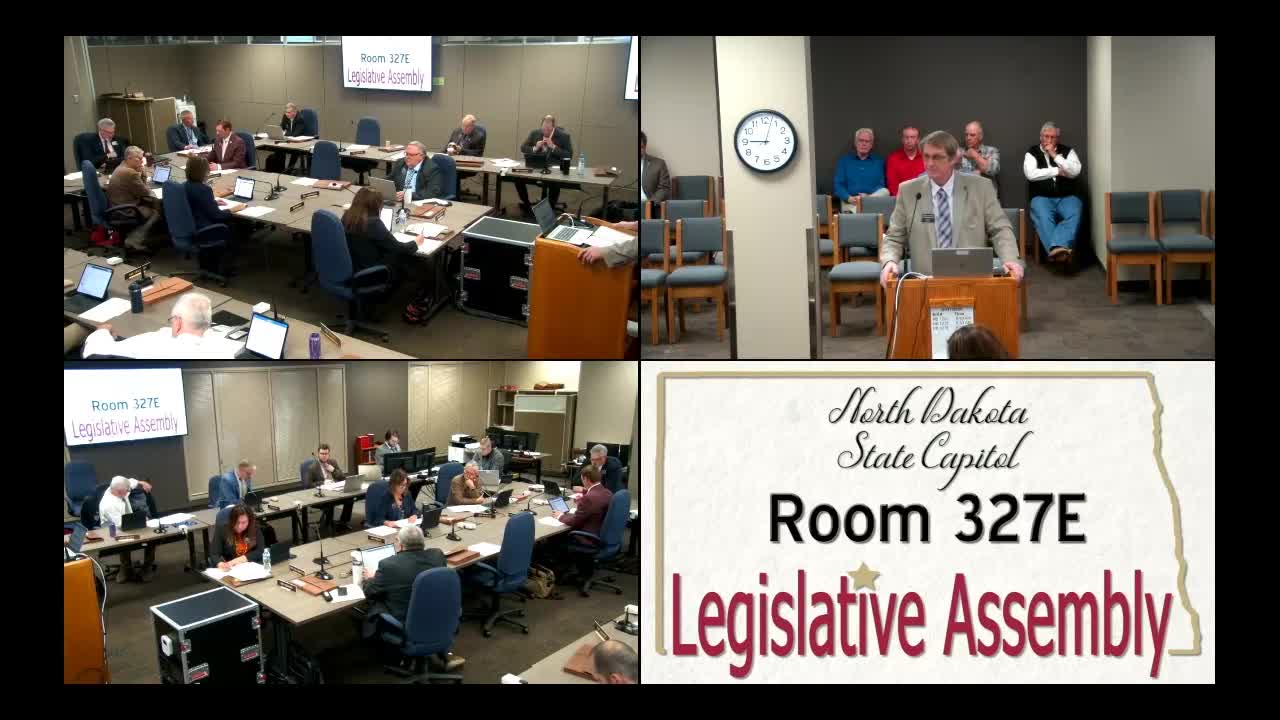Sergeant County faces flooding crisis as legal drain project costs soar to $7.9 million
January 17, 2025 | Transportation, House of Representatives, Legislative, North Dakota
This article was created by AI summarizing key points discussed. AI makes mistakes, so for full details and context, please refer to the video of the full meeting. Please report any errors so we can fix them. Report an error »

During a recent House Transportation meeting on January 17, 2025, significant discussions centered around the ongoing issues related to Legal Drain 11 in Sergeant County, North Dakota. The meeting highlighted the challenges faced by local farmers and residents due to flooding and legal disputes that have delayed necessary infrastructure improvements.
Representatives from Sergeant County presented maps and shared firsthand accounts of the flooding problems that have plagued the area. The discussions revealed that the legal drain system, particularly Legal Drain 11, has been a source of contention, especially following a Supreme Court ruling requiring a vote in Sergeant County before any further work could proceed. This ruling has stalled progress on critical drainage projects, leaving many roads flooded for extended periods, sometimes up to six months a year.
The meeting underscored the impact of previous infrastructure changes made by the North Dakota Department of Transportation (DOT) in 2013, which involved replacing smaller culverts with larger ones. This change increased water flow into the drainage system, exacerbating flooding issues for residents in Sergeant County, particularly those living downstream in Ransom County, who do not contribute to the assessment fees for the drain.
The financial implications of these delays were also a focal point of the discussion. Originally estimated at $3.1 million in 2016 for an 11-mile stretch of drainage work, the costs have ballooned to nearly $7.9 million due to legal disputes and inflation. The delays have not only increased project costs but have also resulted in over $1.1 million in legal fees, further straining taxpayer resources.
As the meeting concluded, it was clear that the resolution of these drainage issues is critical for the agricultural community in Sergeant County. The representatives emphasized the need for collaboration between counties and a streamlined process to address the flooding concerns effectively. The outcomes of this meeting could pave the way for future legislative actions aimed at improving drainage infrastructure and alleviating the flooding challenges faced by local residents.
Representatives from Sergeant County presented maps and shared firsthand accounts of the flooding problems that have plagued the area. The discussions revealed that the legal drain system, particularly Legal Drain 11, has been a source of contention, especially following a Supreme Court ruling requiring a vote in Sergeant County before any further work could proceed. This ruling has stalled progress on critical drainage projects, leaving many roads flooded for extended periods, sometimes up to six months a year.
The meeting underscored the impact of previous infrastructure changes made by the North Dakota Department of Transportation (DOT) in 2013, which involved replacing smaller culverts with larger ones. This change increased water flow into the drainage system, exacerbating flooding issues for residents in Sergeant County, particularly those living downstream in Ransom County, who do not contribute to the assessment fees for the drain.
The financial implications of these delays were also a focal point of the discussion. Originally estimated at $3.1 million in 2016 for an 11-mile stretch of drainage work, the costs have ballooned to nearly $7.9 million due to legal disputes and inflation. The delays have not only increased project costs but have also resulted in over $1.1 million in legal fees, further straining taxpayer resources.
As the meeting concluded, it was clear that the resolution of these drainage issues is critical for the agricultural community in Sergeant County. The representatives emphasized the need for collaboration between counties and a streamlined process to address the flooding concerns effectively. The outcomes of this meeting could pave the way for future legislative actions aimed at improving drainage infrastructure and alleviating the flooding challenges faced by local residents.
View full meeting
This article is based on a recent meeting—watch the full video and explore the complete transcript for deeper insights into the discussion.
View full meeting
